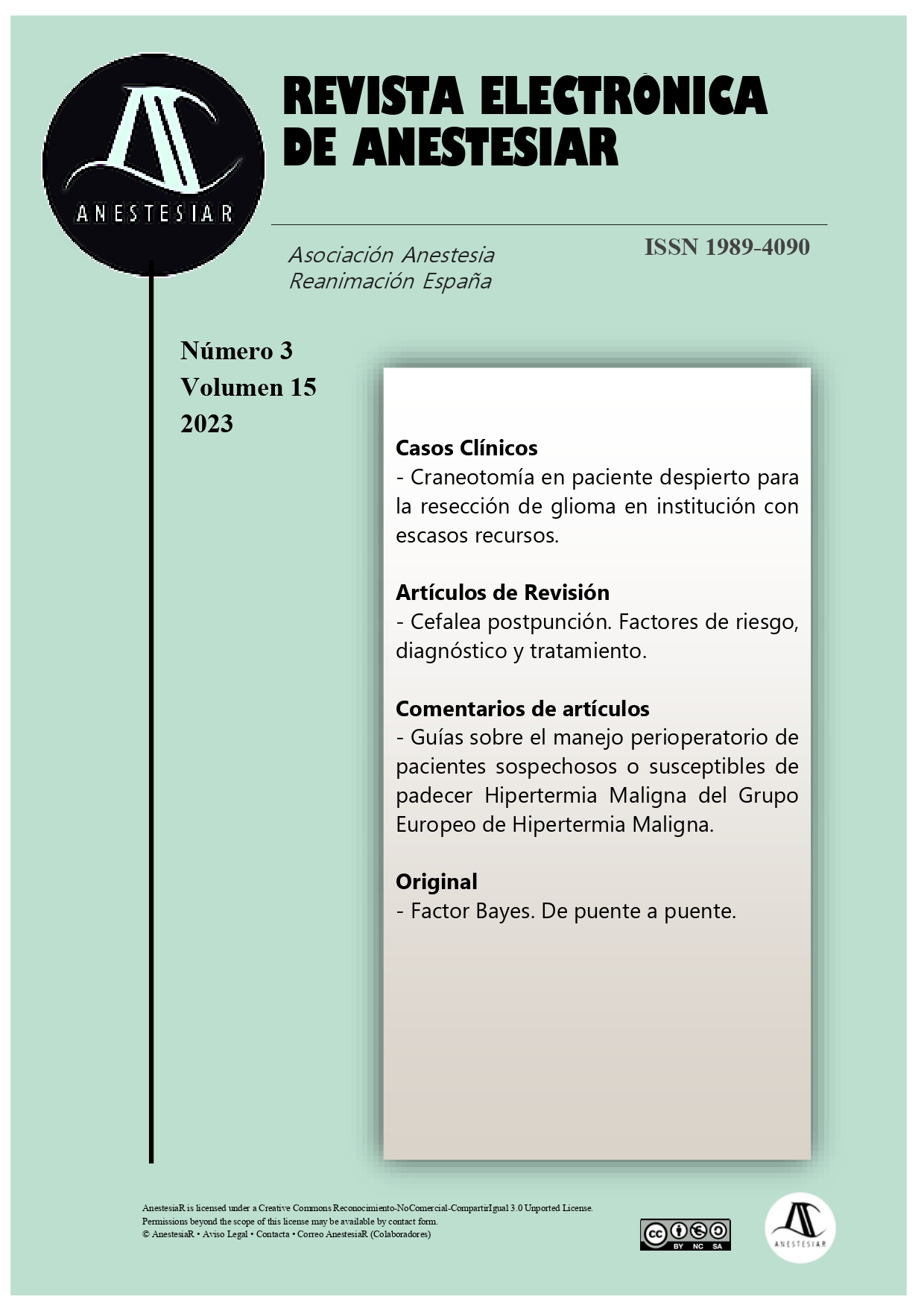Glomerular hyperfiltration in the patient with severe trauma: first data from a prospective observational study.
DOI:
https://doi.org/10.30445/rear.v15i3.974Keywords:
augmented renal clearance, glomerular hyperfiltration, polytraumatized, intensive careAbstract
Introduction: The primary objective was to determine the incidence of glomerular hyperfiltration (GHF) in a population of patients admitted for severe trauma in the intensive care unit (ICU). The secondary objective was to compare creatinine clearance (CrCl) with results from the Jelliffe, CockCroft-Gault and T-MDRD equations.
Methods: Prospective observational study that includes patients admitted in ICU with a diagnosis of severe trauma. CrCl was measured in a 4-hour sample on the third day of admission. Patient demographics and injury severity score (ISS) are collected. GHF was defined as CrCl> 130 ml / min / 1.73 m2.
Results: 20 patients were included with 52.8 ± 17.7 years, 75% male, and ISS 25.4 ± 7.2. The incidence of GHF measured by clearance was 75% on the third day of admission and was more common in women (100%) than in men (66.6%) with values ranging between 131 and 226 ml/min/1.73 m2. The data provided by the equations underestimated the clearance in 90% of the cases, finding the highest concordance with T-MDRD, which detected 43.7% of the patients with GHF.
Conclusions: The incidence of GHF in patients with severe trauma is high in the first week of admission. The compared formulas show important deviations with respect to CrCl. In case of using an estimating equation, we recommend T-MDRD, although in most cases the real value is underestimated.
References
Conil JM, Georges B, Fourcade O, Seguin T, Lavit M, Samii K, Houin G,Tack I, Saivin S: Assessment of renal function in clinical practice at the bedside of burn patients. Br J Clin Pharmacol 2007, 63:583-594.
Loirat P, Rohan J, Baillet A, Beaufils F, David R, Chapman A: Increased glomerular filtration rate in patients with major burns and its effect on the pharmacokinetics of tobramycin. N Engl J Med 1978, 299:915-919.
Conil JM, Georges B, Breden A, Segonds C, Lavit M, Seguin T, Coley N, Samii K, Chabanon G, Houin G, Saivin S: Increased amikacin dosage requirements in burn patients receiving a once-daily regimen. Int J Antimicrob Agents 2006, 28:226-230.
Conil JM, Georges B, Lavit M, Laguerre J, Samii K, Houin G, Saivin S: A population pharmacokinetic approach to ceftazidime use in burn patients: influence of glomerular filtration, gender and mechanical ventilation. Br J Clin Pharmacol 2007, 64:27-35.
Jelliffe R. Creatinine clearance: Bedside estimate. Ann Intern Med. 1973;79:604.
Cockcroft DW, Gault MH. Prediction of creatine clearance from serum creatinine. Nephron 1976 16(1):31-41.
Brandt MM, Falvo AJ, Rubinfeld IS, et al. Renal dysfunction in trauma: even a little costs a lot. J Trauma 2007;62: 1362e1364.
Veerle Grootaert, Ludo Willems, Yves Debaveye, Geert Meyfroidt, and Isabel Spriet. Augmented Renal Clearance in the Critically Ill: How to Assess Kidney Function. Ann Pharmacother 2012;46(7-8):952-9.
National Kidney Foundation Kidney Disease Quality Outcome Initiative (K/DOQI) Clinical Practice Guidelines for Chronic Kidney Disease: Evaluation, classification, and stratification. Part 4. Definition and classification of stages of chronic kidney disease. Am J Kidney Dis 2002 39:S46 75, (suppl 1).
Udy, A.A.; Jarrett, P.; Stuart, J.; LassigSmith, M.; Starr, T.; Dunlop, R.;Wallis, S.C.; Roberts, J.A.; Lipman, J. Determining the mechanisms underlying augmented renal drug clearance in the critically ill: Use of exogenous marker compounds. Crit. Care 2014, 18, 657.
Cox HJ, Bhandari S, Rigby AS, Kilpatrick ES. Mortality at low and high estimated glomerular filtration rate values: a ‘u’ shaped curve. Nephron Clin Pract 2008;110:67-72.
Published
How to Cite
Issue
Section
License
Copyright (c) 2023 Revista Electrónica AnestesiaR

This work is licensed under a Creative Commons Attribution-ShareAlike 4.0 International License.
 Envío y derechos de autor
Envío y derechos de autor


 Revista Electrónica AnestesiaR by
Revista Electrónica AnestesiaR by 